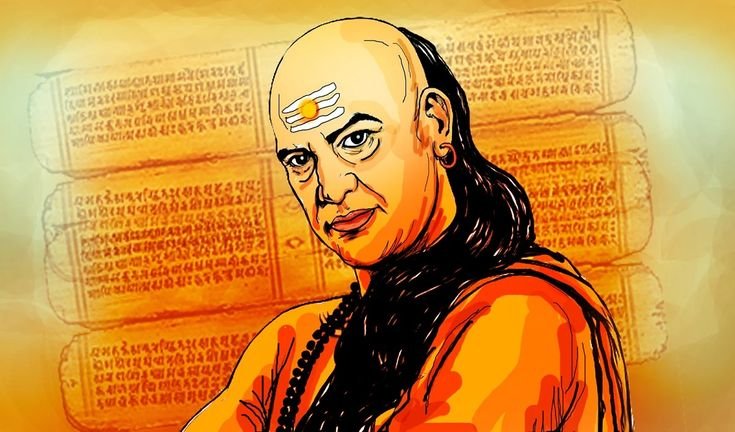The Diplomatic Legacy of Chanakya: Lessons in Statecraft and Strategy

Chanakya, also known as Kautilya or Vishnugupta, is one of the most celebrated figures in Indian history. His ideas and strategies laid the foundation for governance and diplomacy in ancient India, and they continue to resonate even today. Living during the 4th century BCE, Chanakya played a pivotal role in the establishment of the Maurya Empire. As the chief advisor to Emperor Chandragupta Maurya, his wisdom and guidance helped unify a fragmented India under a strong central government. His writings, especially the Arthashastra, remain a treasure trove of knowledge on politics, economics, and strategy.
Understanding Chanakya’s Era
To fully appreciate Chanakya’s genius, it’s important to understand the turbulent times he lived in. The Indian subcontinent was divided into multiple kingdoms, each vying for dominance. The threat of foreign invasions, particularly after Alexander the Great’s incursion into the region, further destabilized the political landscape. In this chaotic environment, Chanakya envisioned a unified India led by a strong ruler who could safeguard its sovereignty and promote prosperity.
Chanakya’s rise was not accidental but a testament to his strategic brilliance. Recognizing the potential in Chandragupta Maurya, he mentored the young leader and orchestrated a series of plans to overthrow the Nanda dynasty, which was then ruling much of northern India. Through careful planning, alliances, and strategic warfare, the foundation of the Maurya Empire was laid, marking the beginning of a new era.
The Cornerstones of Chanakya’s Diplomacy
The Mandala Theory
One of Chanakya’s most famous contributions to the art of diplomacy is the Mandala Theory. According to this theory, neighboring states are natural adversaries, while those farther away are potential allies. Chanakya advocated for forming alliances with distant powers to counterbalance immediate threats. This pragmatic approach to foreign relations is strikingly similar to modern strategies, where nations often align themselves with others based on shared interests rather than proximity.
Intelligence and Espionage
Chanakya was a firm believer in the importance of intelligence. He emphasized the need for a well-organized network of spies who could provide critical information about rival kingdoms, internal dissent, and potential threats. His approach to espionage wasn’t limited to gathering information; it also included spreading misinformation to destabilize adversaries.
The relevance of this strategy is evident even today, as nations heavily invest in intelligence agencies to safeguard their interests. The role of agencies like the CIA, MI6, or RAW mirrors Chanakya’s emphasis on the power of information in shaping the outcomes of conflicts and negotiations.
The Art of Negotiation
Chanakya’s diplomatic strategies often prioritized dialogue over warfare. He believed in resolving conflicts through negotiations, leveraging economic and political incentives to achieve favorable outcomes. For instance, he advocated for matrimonial alliances and trade agreements as tools for fostering peace and cooperation.
This reliance on soft power reflects modern diplomatic practices, where economic partnerships and cultural exchanges often play a more significant role than military might in maintaining international relations.
Pragmatism and Morality in Governance
Critics often label Chanakya as ruthless, citing his emphasis on pragmatism over morality. However, his actions were guided by a deep sense of responsibility toward the state and its people. For Chanakya, the ultimate goal was the welfare of the kingdom, even if it meant making morally ambiguous decisions.
His philosophy aligns with the realist school of thought in international relations, which argues that the pursuit of national interest should take precedence over ideological considerations. Chanakya’s teachings remind us that leadership often involves navigating complex ethical dilemmas where the greater good must be prioritized.
Lessons in Administration and Strategy
Centralized Governance
Chanakya’s vision for governance revolved around a centralized system where efficiency and accountability were paramount. He stressed the importance of meritocracy in administrative appointments and advocated for a fair taxation system to ensure economic stability. By promoting agricultural productivity and trade, he laid the groundwork for a prosperous and self-sufficient state.
These principles are remarkably relevant today, where governments strive to balance economic growth with social equity. Chanakya’s insights into anti-corruption measures and fiscal discipline offer valuable lessons for contemporary policymakers.
Military Strategy
Chanakya’s approach to warfare was as much about strategy as it was about strength. He believed in weakening adversaries through non-military means such as economic blockades, fostering internal dissent, and forming strategic alliances. Only when all other options were exhausted did he advocate for direct confrontation.
A notable example of his strategic acumen is the way he orchestrated the downfall of the Nanda dynasty. By exploiting internal weaknesses and rallying support from disaffected factions, he ensured a relatively swift and decisive victory for Chandragupta Maurya.
Economic Policies
Chanakya’s economic vision was centered on wealth creation and equitable distribution. He recognized the importance of a strong economy in ensuring political stability and advocated for policies that encouraged trade, agricultural growth, and innovation. His emphasis on public welfare, including building infrastructure and providing social safety nets, underscores his holistic approach to governance.
Relevance in the Modern World
Chanakya’s teachings transcend time and geography, offering valuable insights for contemporary leaders and diplomats. His Mandala Theory, for instance, finds parallels in the foreign policies of modern nations that seek to balance regional power dynamics through strategic alliances. Similarly, his focus on intelligence and economic strength underscores the importance of non-military tools in achieving national objectives.
India’s current foreign policy, which emphasizes strategic autonomy and leveraging economic partnerships, reflects many of Chanakya’s principles. His ideas also resonate in the broader context of global diplomacy, where pragmatism and adaptability are often key to navigating complex international challenges.
Conclusion
The legacy of Chanakya is a testament to the enduring relevance of his insights into governance, diplomacy, and strategy. His ability to blend pragmatism with ethical considerations provides a roadmap for effective leadership, both in ancient and modern contexts. By studying his life and works, we not only gain a deeper understanding of India’s rich political heritage but also uncover timeless lessons that can guide us in addressing today’s challenges.
As we navigate an increasingly interconnected and volatile world, Chanakya’s wisdom serves as a beacon, reminding us of the importance of adaptability, foresight, and a relentless commitment to the greater good.


